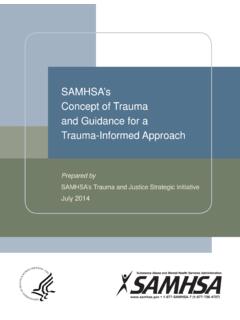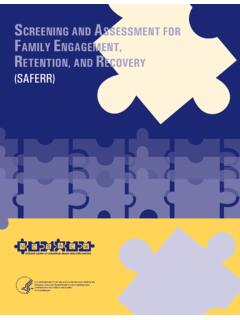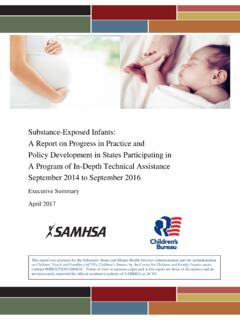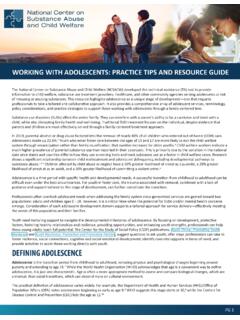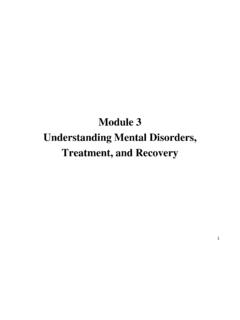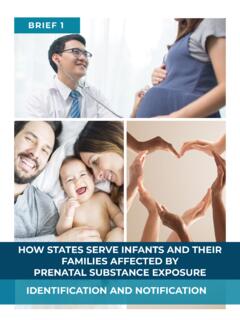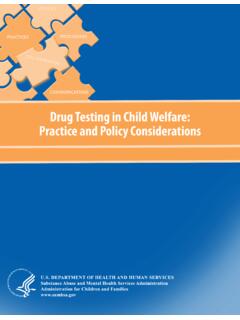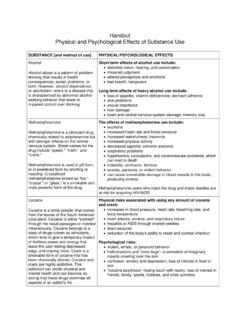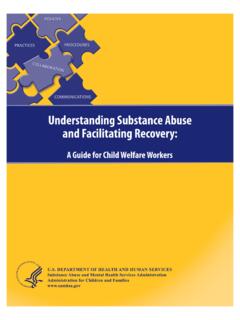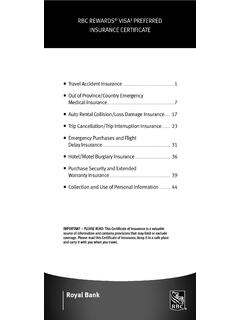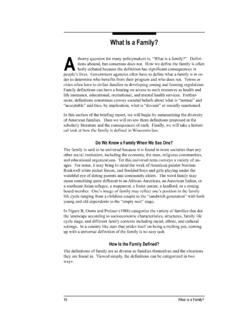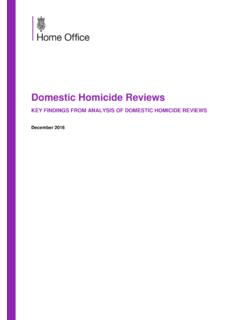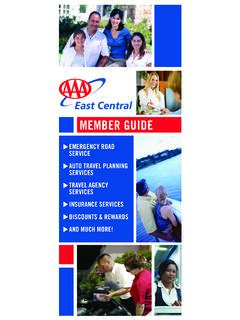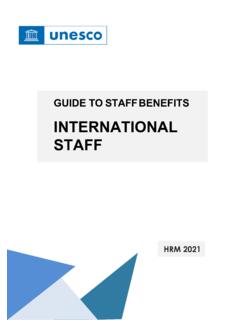Transcription of Understanding Substance Use Disorder Treatment: A …
1 Understanding Substance Use Disorder Treatment: A resource guide for professionals referring to treatment Acknowledgments This Technical Assistance Tool was developed by the National Center on Substance Abuse and Child Welfare (NCSACW). NCSACW is a technical assistance resource center jointly funded by the Substance Abuse and Mental Health Services Administration (SAMHSA) and the Children s Bureau (CB), Administration on Children, Youth and Families (ACYF), Department of Health and Human Services. Points of view or opinions expressed in this guide are those of the authors and do not necessarily represent the official position or policies of SAMHSA or ACYF.
2 Contact Information Website: Toll Free: 1 866 493 2758 Email: Contents Introduction and Purpose of the Technical Assistance (TA) Tool .. 1 Substance Use Disorder 2 Overview .. 2 Effective Treatment .. 3 The Treatment Process .. 6 Treatment Funding .. 9 Discussion Questions: Exploring Treatment Resources in Your Community .. 10 Enrollment and Intake Process .. 10 Assessment .. 11 Accreditation and Staff Training .. 11 Medication .. 12 Treatment Program Specifics .. 12 Evidence-Based Practices and Therapies.
3 13 Families .. 14 Support .. 1 Introduction and Purpose of the Technical Assistance (TA) Tool In 2017, it was estimated that million children aged 17 or younger lived in households with at least one parent who had a Substance use Disorder (SUD) in the past Interactions that occur between parents with SUDs and their children may have prolonged effects on their children. Ineffective parenting due to a SUD may be because of physical or mental impairments caused by substances; reduced ability to respond to a child s needs; difficulty regulating emotions, anger, and impulsivity; spending limited funds on alcohol and/or drugs; incarceration; estrangement from family and other social supports.
4 And out-of-home care for the It has been shown that higher rates of Substance use signs are associated with more complex and severe cases of child maltreatment and could potentially be less likely to result in In 2018, the Department of Health and Human Services Office of the Assistant Secretary for Planning and Evaluation (ASPE) conducted interviews with professionals from across the country and found that child welfare agencies and their community partners are struggling to meet families Timeliness of Substance use assessments and entry into treatment continues to be a challenge for communities.
5 ASPE found that caseworkers, courts, and other providers misunderstand how treatment works and lack guidelines on how to incorporate services into child welfare practices. Research shows that parents who are screened and identified as having a SUD and who are engaged into treatment early are more likely to retain custody of or reunification with their A key component to reunifying children with their families is facilitating collaborative discussions between child welfare and court professionals and their treatment counterparts to facilitate access to SUD treatment that meets the needs of parents and families.
6 Navigating the treatment process can be daunting and confusing to individuals with an SUD and to professionals who support them. This TA tool is designed to equip professionals who refer parents to SUD treatment with a fundamental Understanding of treatment. The tool includes a list of questions child welfare or court staff can ask treatment providers to ensure that effective linkages are made. With the knowledge gained, professionals will be able to make informed referral decisions for services that are a good fit to meet the parent and family s needs.
7 2 Substance Use Disorder Treatment Overview SUD treatment is dependent on the needs of the individual. The type, length, and intensity of treatment is determined by the severity of the SUD, types of substances used, support systems available, prior life experiences, and behavioral, physical, gender, cultural, cognitive, and/or social factors. Additional factors include the availability of treatment in the community and coverage for the cost of care. Everyone entering quality treatment receives a clinical assessment that examines these factors.
8 A complete assessment of an individual is needed to help treatment professionals offer the best type of treatment that meets his or her needs. NCSACW offers a variety of TA resources including publications, webinars, and tools that child welfare, court professionals, and communities can use to better serve families affected by SUD. These materials are available at: Key resources to strengthen an Understanding of SUD treatment are: 1. Understanding Substance Abuse and Facilitating Recovery: A Guide for Child Welfare Workers This document aims to help child welfare workers understand SUD and how to support and facilitate treatment and recovery, enhance collaboration with SUD treatment partners, and improve outcomes for children of parents with SUDs.
9 To access this guide, please visit: 2. NCSACW Online Tutorials These self-paced, free online tutorials offer Substance use treatment professionals, child welfare professionals, and legal professionals discipline-specific information about SUDs and their impact on parenting, engagement strategies, and the treatment and recovery process for families affected by SUDs. The tutorials highlight services needed by children whose parents have an SUD and offer methods of improving collaboration among SUD treatment, child welfare, and court systems.
10 To access the tutorial, please visit: Families may also have questions about the treatment process. SAMHSA developed the booklet What is Substance Abuse Treatment? A Booklet for Families, which answers questions often asked by families of people entering SUD treatment. The ultimate goal of SUD treatment is recovery. SAMHSA created a working definition of recovery that incorporates four major principles: health, home, purpose, and community. It is helpful for professionals referring to treatment to have a foundational Understanding of recovery.
